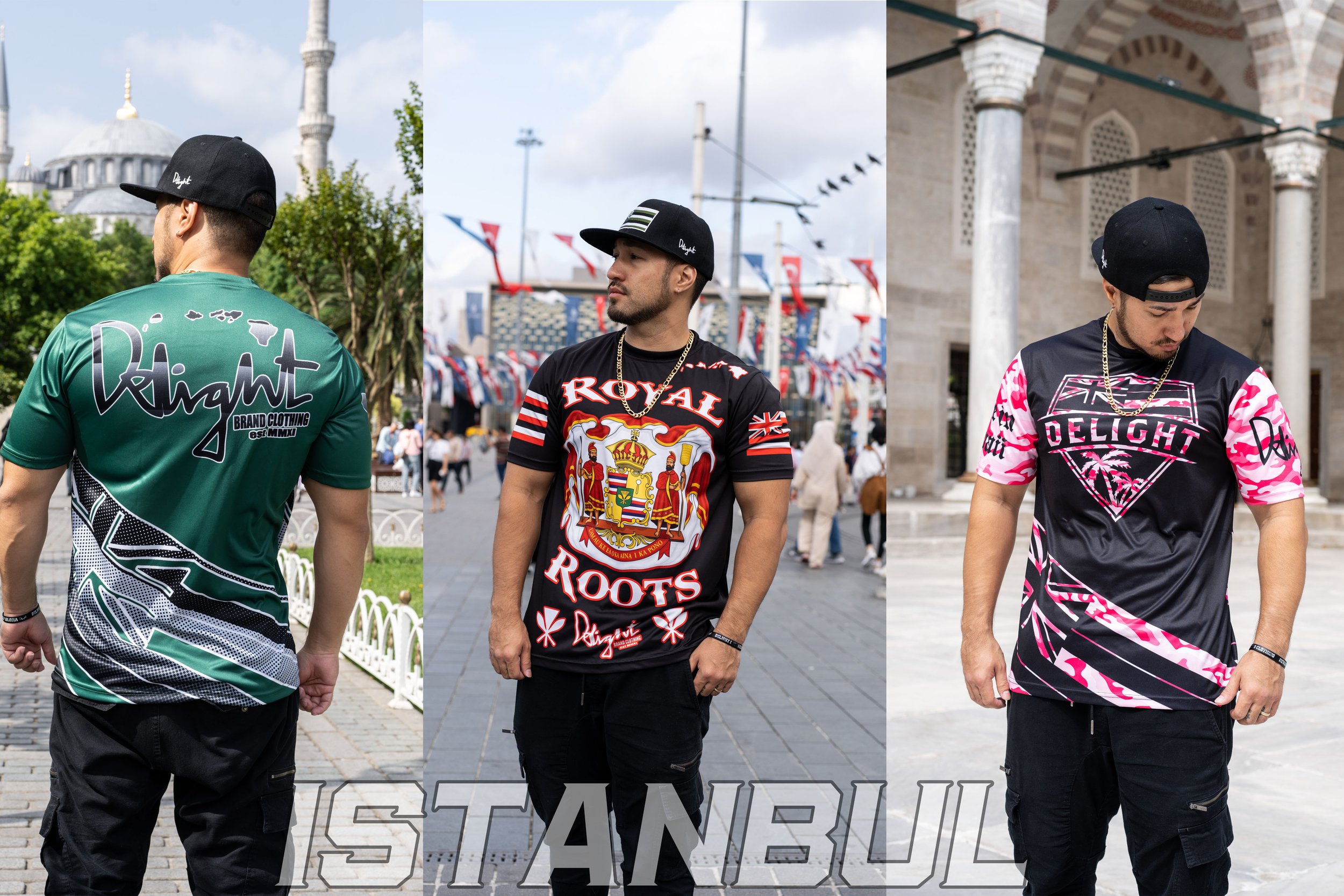Is Branded Clothing Really Better Because of the Fabric?
Is Branded Clothing Really Better Because of the Fabric?
Blog Article
Comprehending Apparel: The Significance of Fabric Choices in Your Wardrobe
The selection of textile in clothing plays a crucial function in both aesthetics and capability. Various materials offer differing degrees of breathability, comfort, and resilience, straight affecting the wearer's experience. Recognizing these subtleties can improve one's closet noticeably. Many forget how these selections can influence not just personal style, yet also sustainability. What fabric decisions could redefine your wardrobe and align it with both style and obligation?
The Function of Textile in vogue and Functionality

Common Textile Types and Their Characteristics
When choosing clothes, understanding the attributes of common textile kinds is essential for making educated selections. Cotton, a widely-used natural fiber, is known for its adaptability, breathability, and soft qualities, making it suitable for sportswear and day-to-day garments. Linen, an additional all-natural alternative, boasts outstanding moisture-wicking homes and an unique texture, perfect for warm climates.Wool, typically preferred for its heat and resilience, varies in excellence; merino woollen is soft versus the skin, while coarser kinds are utilized for outerwear. Artificial materials like polyester and nylon provide durability and resistance to wrinkles, making them prominent for activewear and travel garments. Blends, which incorporate natural and artificial fibers, can enhance capability while maintaining comfort. By acknowledging these material characteristics, individuals can select garments that lines up with their way of living and visual choices.
Breathability and Comfort: Picking the Right Fabrics for Different Climates
Choosing the ideal materials for numerous environments can substantially improve convenience and general wearability. Breathable materials are necessary in hot environments, as they permit air flow and moisture dissipation. Fabrics such as cotton, bed linen, and moisture-wicking synthetics effectively draw sweat far from the body, maintaining the user cool and completely dry. On the other hand, in cooler climates, thicker materials like wool or fleece supply insulation while retaining breathability, ensuring warmth without overheating.Additionally, the option of fabric weight plays a vital role; light-weight materials are better for summer, whereas larger alternatives are fit for wintertime wear. Recognizing the distinct residential properties of each material enables people to clothe properly for varying weather. Ultimately, picking breathable and comfy materials tailored to details environments can significantly enhance day-to-day convenience and boost the total experience of using clothes.
Durability and Treatment: How Material Impacts Longevity of Your Wardrobe
Selecting the best products can substantially impact the sturdiness and treatment requirements of a wardrobe. Fabrics such as cotton and polyester are known for their durability and convenience of upkeep, making them perfect for everyday wear. On the other hand, fragile materials like silk and lace require even more careful handling and specialized cleaning methods, which can enhance the time and initiative needed for care. Branded Clothing.Durability is likewise affected by the material's weave and finish; snugly woven materials have a tendency to withstand wear and tear better than freely woven choices. Furthermore, synthetic blends typically supply improved resilience, integrating the ideal high qualities of numerous fibers.Understanding the care guidelines for each and every material is important, as improper drying out or cleaning can lead to premature wear. Ultimately, picking durable materials can result in a longer-lasting wardrobe, lowering the regularity of substitutes and adding to a more sustainable fashion choice
The Impact of Fabric on Fit and Shape

Sustainable Fabric Selections: Making Eco-Friendly Decisions
The effect of textile expands beyond fit and shape to encompass ecological elements, motivating a growing rate of interest in lasting material choices. Environmentally friendly fabrics, such as organic cotton, hemp, and Tencel, are gaining traction amongst customers who focus on sustainability in their closets. These materials are typically produced with fewer chemicals and water, minimizing their ecological footprint.Additionally, recycled materials, made from post-consumer waste, use an innovative remedy to the textile market's air pollution issue. Brands from this source increasingly accept transparency in their sourcing methods, enabling consumers to make educated choices concerning their purchases.Choosing sustainable fabrics not only supports moral practices but likewise urges the garment industry to embrace even more liable production techniques. As recognition of ecological concerns rises, individuals are advised to mirror on the lasting impact of their fabric selections, cultivating an activity towards a more environmentally conscious and lasting strategy to style.
Raising Design: Just How Material Can Change an Attire
While lots of might focus on color and cut when picking a clothing, the choice of fabric plays an important function in boosting style and improving overall look. Various materials communicate distinctive state of minds and messages; for instance, silk shows luxury and refinement, while denim offers an informal, relaxed vibe. The appearance and drape of a fabric can considerably modify the shape, with organized fabrics giving a sleek appearance and softer ones producing a more fluid, relaxed aesthetic.Moreover, the weight of the textile affects wearability across periods. Light-weight fabrics like linen and cotton are perfect for summer, while heavier materials such as wool and velour give heat and sophistication in colder months. Comprehending textile residential or commercial properties, such as breathability and stretch, also encourages people to make educated selections that boost comfort without jeopardizing style. Eventually, the best material can transform a clothing from average to amazing, making it an important factor to consider in any wardrobe.
Regularly Asked Questions
How Do I Identify the Material Content of My Garments?
To identify textile content, one can analyze treatment tags, conduct shed tests for fiber identification, or get in touch with textile examples. These approaches assist separate products, ensuring this post notified choices for garments treatment and maintenance in everyday wear.
Can Textile Selection Affect My State Of Mind or Self-confidence?
Textile selection can substantially influence an individual's state of mind and confidence. Branded Clothing. Certain materials may stimulate sensations of comfort or beauty, while others can feel unflattering or limiting, ultimately influencing self-perception and psychological well-being throughout the day
What Fabrics Are Ideal for Delicate Skin?
For individuals with sensitive skin, natural textiles like linen, bamboo, and cotton are commonly suggested. These materials are breathable, hypoallergenic, and much less likely to cause irritation, making them ideal options for comfort and skin health and wellness.
How Do I Properly Laundry and Look After Various Fabrics?
To correctly care and wash for different materials, one need to consider each product's specific demands, consisting of temperature level setups, detergents, and drying methods, making sure durability and preserving the textile's initial high qualities for optimal usage.
Are There Specific Fabrics for Athletic or Performance Put On?
Athletic or efficiency wear commonly uses textiles such as nylon, polyester, and spandex. These materials are created for moisture-wicking, breathability, and versatility, improving movement and convenience during exercises while providing longevity and assistance. Conversely, in colder climates, thicker textiles like wool or fleece supply insulation while keeping breathability, making sure heat without overheating.Additionally, the choice of textile weight plays a crucial function; lightweight materials are more suitable for summer season, whereas much heavier choices are matched for winter wear. In contrast, fragile products like silk and shoelace require more careful handling and specialized cleaning techniques, which can enhance the time and initiative needed for care.Durability is additionally influenced by the fabric's weave and finish; securely woven fabrics often tend to resist wear click reference and tear much better than freely woven choices. In contrast, inflexible materials can restrict movement but provide a traditional, refined look.Moreover, the thickness and texture of the fabric can influence the aesthetic understanding of body shape. The effect of material extends past fit and silhouette to encompass ecological aspects, prompting an expanding passion in sustainable textile choices. The appearance and drape of a material can substantially modify the shape, with organized materials offering a polished look and softer ones producing a more fluid, unwinded aesthetic.Moreover, the weight of the material affects wearability across seasons.
Report this page